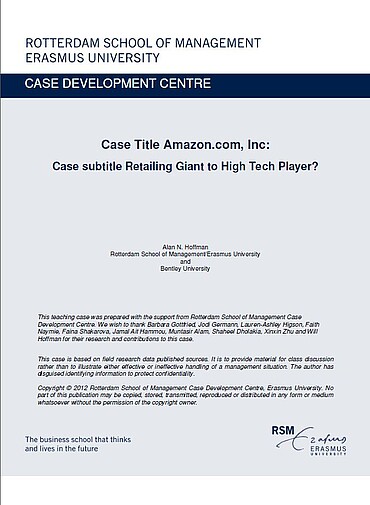Citation Note
Based on published Sources; 18 pages.
Follow the 'handle' link to access the Case Study on RePub.
For EUR staff members: the Teaching Note is available on request, you can contact us at rsm.nl/cdc/contact/
For external users: follow the link to purchase the Case Study and the Teaching Note.
description
After becoming a giant in the on-line sales community, Amazon was at a crossroads with regard to its push into technology versus its general merchandise. Which strategic direction should it choose in order to mitigate the current challenges and continue to pursue its growth strategy?
Abstract
Founded by Jeff Bezos, on-line giant Amazon.com was incorporated in the state of Washington in July 1994 and sold its first book in July 1995. Amazon quickly grew from an on-line bookstore to the world's largest on-line retailer, greatly expanding its product and service offerings through a series of acquisitions, alliances, partnerships and exclusivity agreements. By 2010, 43% of Amazon net sales were from media, including books, music, DVDs/video products, magazine subscriptions, digital downloads, and video games. More than half of all Amazon sales came from computers, mobile devices (including the Kindle, Kindle Fire, and Kindle Touch), and other electronics, as well as general merchandise, from home and garden supplies to groceries, apparel, jewellery, health and beauty products, sports and outdoor equipment, tools, and auto and industrial supplies. Amazon faced several other challenges, including those from state governments that wanted it to collect sales taxes so that it did not adversely compete against local businesses. Amazon was at a crossroads with regard to its push into technology vs. its general merchandise.
usage
This case is written in a way that complex strategic decisions can easily be analyzed during limited classroom discussion time. Professors have commented that the case has worked well in their classrooms.
